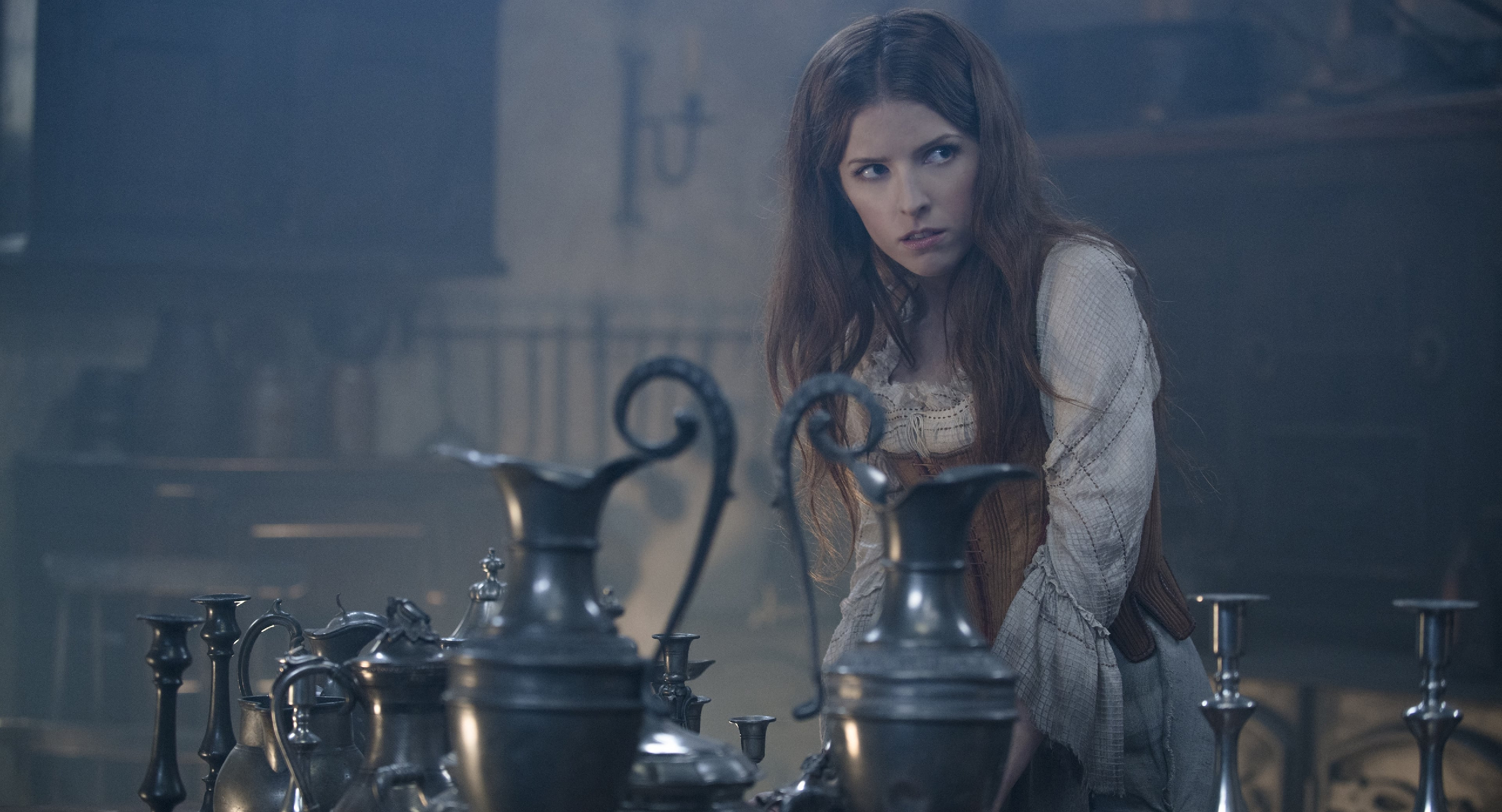Into the Woods – Film Review
Published August 9, 2023

As the result of the curse of a once-beautiful witch, a baker and his wife are childless. Three days before the rise of a blue moon, they venture into the forest to find the ingredients that will reverse the spell and restore the witch’s beauty: a milk-white cow, hair as yellow as corn, a blood-red cape, and a slipper of gold. During their journey, they meet Cinderella, Little Red Riding Hood, Rapunzel and Jack, each one on a quest to fulfill a wish.
Into the Woods is a cinematic adaptation of Stephen Sondheim’s renowned musical that intertwines classic fairy tales into a cohesive narrative. Marshall’s take on this complex tale offers a visually enchanting experience while occasionally faltering in terms of pacing and tonal consistency. With a star-studded cast, stunning production design, and memorable musical numbers, the film showcases both the brilliance of its source material and the challenges of translating it to the big screen.
One of the standout features of Into the Woods is its captivating visual presentation. The lush and vibrant settings transport the audience into a whimsical realm where fairy tales collide. The attention to detail in the set design and costume choices helps ground the fantastical elements, making the audience feel both immersed and connected to the story. From the towering beanstalk to the eerie woods, the film excels at bringing Sondheim’s storybook world to life. The use of CGI enhances the magic, though it occasionally veers into the slightly artificial. Overall, the visual aesthetics play a pivotal role in conveying the fantastical nature of the story.
The ensemble cast of Into the Woods boasts some of Hollywood’s finest, including Meryl Streep, Emily Blunt, James Corden, and Anna Kendrick. Meryl Streep, in particular, shines as the Witch, delivering a nuanced performance that captures both the character’s complexity and vulnerability. Emily Blunt and James Corden exhibit chemistry and charm as the Baker’s Wife and Baker, while Anna Kendrick delivers a commendable portrayal of Cinderella. However, not all cast members are equally impressive. Johnny Depp‘s cameo as the Wolf feels oddly disconnected from the rest of the film and borders on unsettling, affecting the overall cohesion of the narrative.
The heart of Into the Woods lies in its intricate and memorable musical compositions, a hallmark of Stephen Sondheim’s work. The film’s rendition of these songs maintains the spirit of the stage production, with strong vocal performances that capture the emotional essence of each character. “Agony,” performed by Chris Pine and Billy Magnussen as the Princes, is a comedic highlight, showcasing the film’s ability to blend humor with emotional depth. The ensemble pieces are rousing and well-executed, heightening the film’s thematic exploration. However, a few musical moments lack the power and resonance they achieved on stage, possibly due to the constraints of adapting the performances to a different medium.
Adapting a complex stage musical like Into the Woods for the screen is a challenging endeavor. While the film manages to maintain the core essence of the story, certain aspects feel rushed or underdeveloped. The first half of the movie successfully intertwines the fairy tales, exploring the characters’ desires and consequences. However, the second half struggles to maintain the same level of engagement, and the pacing becomes uneven. The film’s attempt to provide a more conclusive ending for each character sacrifices some of the original’s darker and more thought-provoking themes. The narrative adaptation showcases both the strengths and limitations of translating intricate theater narratives to film.
Tonal consistency is an area where Into the Woods occasionally falters. Balancing the whimsical and comedic elements with the darker, more philosophical themes proves to be a challenge. The film attempts to navigate this fine line, often succeeding in one aspect while neglecting the other. This results in tonal shifts that can be jarring and disrupt the flow of the story. The transition from light-hearted moments to more somber reflections on consequences and responsibilities is not always seamless, leaving the audience feeling slightly disoriented.
Into the Woods is a visually enchanting adaptation of a beloved musical. The film successfully captures the magic and depth of its source material, boasting strong performances, memorable musical numbers, and a captivating visual presentation. However, its struggle to balance tones, uneven pacing in the latter half, and occasional missteps in casting choices prevent it from reaching its full potential. While not without its flaws, Into the Woods remains a commendable effort to bring a complex stage production to the cinematic medium, offering a delightful and thought-provoking journey through the intertwined world of fairy tales.
